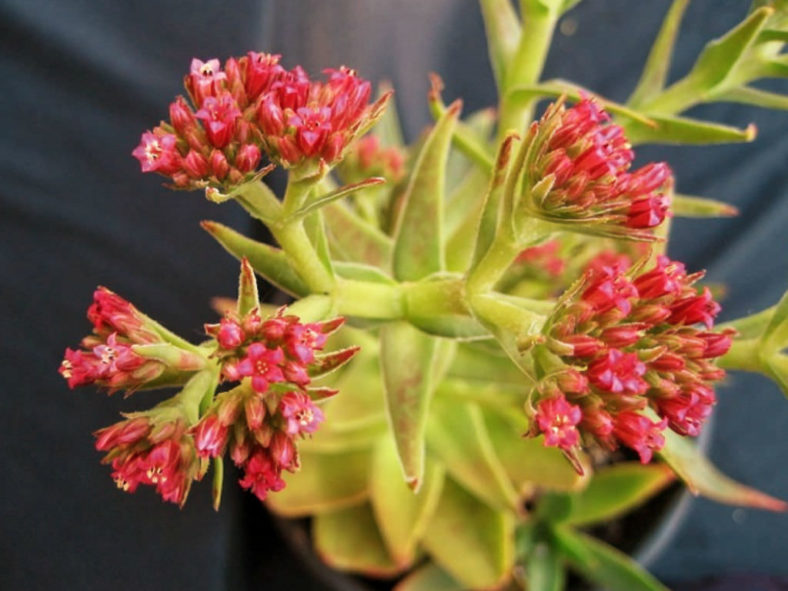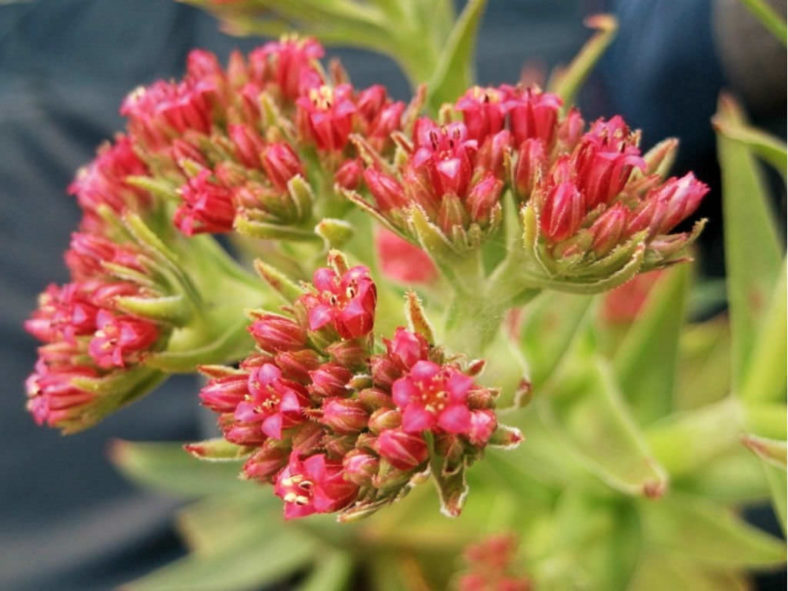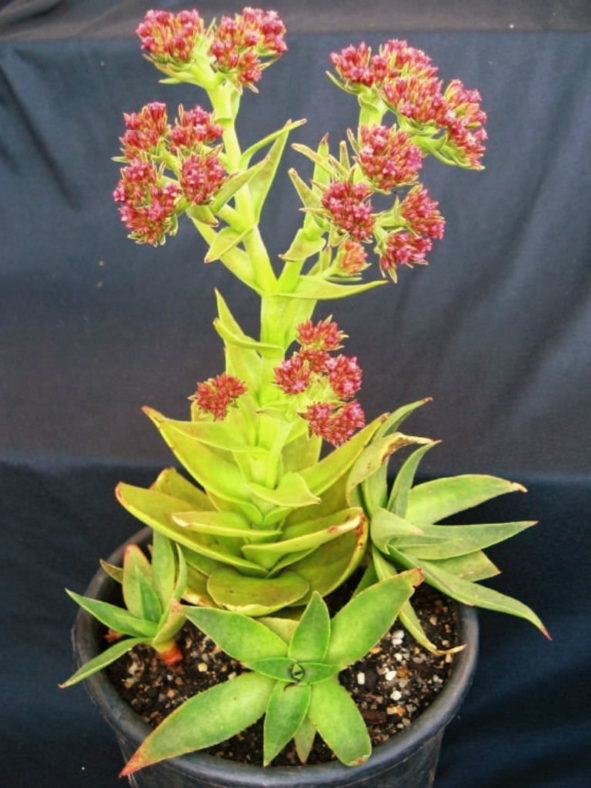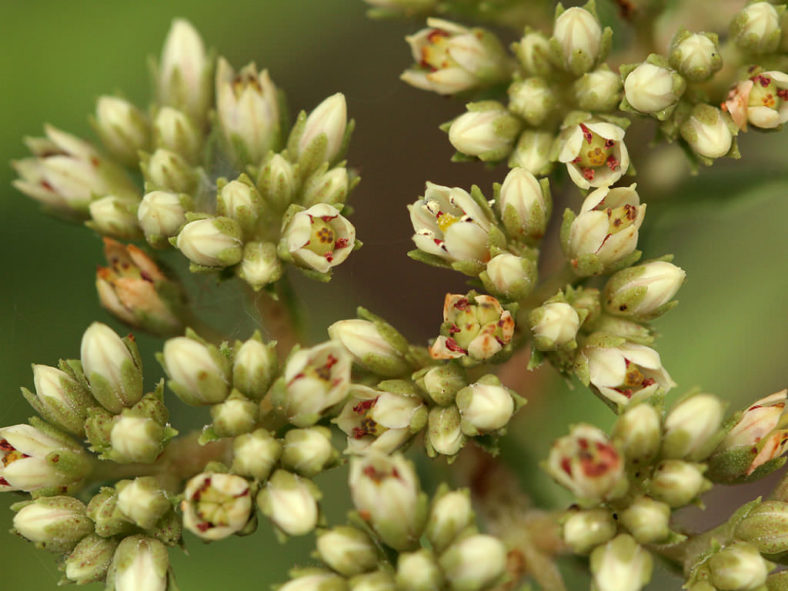Scientific Name
Crassula alba Forssk.
Synonym(s)
Crassula alba var. alba, Crassula rubicunda, Rochea dichotoma, Rochea vaginata
Scientific Classification
Family: Crassulaceae
Subfamily: Crassuloideae
Genus: Crassula
Etymology
The first description of this species in 1775 was for a white-flowered plant, hence the specific epithet "alba (AL-ba)," meaning "white." Only later were red and pink-flowered plants found.
Origin
Crassula alba is native to eastern Africa. It grows in open deciduous woodlands from Ethiopia to South Africa (Eastern Cape).
Description
Crassula alba is an attractive succulent with a tuberous root producing one or many erect flowering stems surrounded at the base by dense rosulate leaves. It can grow up to 20 inches (50 cm) tall, including inflorescence. The rosette leaves are lance-shaped with a folded to channeled upper surface, measuring up to 6.8 inches (17 cm) in length and 0.6 inches (1.5 cm) in width. They are green to yellowish-green, sometimes with purple spots. The cauline leaves are similar to the basal ones but usually smaller.
The flowers are tubular, 5-merous, white, greenish-white, or bright to deep red. They can grow up to 0.3 inches (0.7 cm) long and appear arranged in erect terminal flat-topped thyrses with many dichasia from mid-summer to fall.

Hardiness
USDA hardiness zones 9b to 11b: from 25 °F (−3.9 °C) to 50 °F (+10 °C).
How to Grow and Care
Crassulas are easy to grow but susceptible to mealy bugs and fungal diseases. Overwatering is sure to be fatal, as with all succulents, so err on the side of being too dry rather than too wet. Never let your Crassula sit in water. If you water from beneath by letting the plant sit in a saucer, pour off any excess water after a few minutes.
Crassulas are generally started by division, offsets, or leaf cuttings. Plants can be easily propagated from a single leaf: sprout leaves by placing them into a succulent or cacti mix, then covering the dish until they sprout.
Repot as needed, preferably during the warm season. To repot a succulent, ensure the soil is dry before repotting, then gently remove the pot. Knock away the old soil from the roots, removing any rotted or dead roots. Treat any cuts with a fungicide. Place the plant in its new pot and backfill it with potting soil, spreading the roots as you repot. Leave the plant dry for a week or so, then begin to water lightly to reduce the risk of root rot.
See more at How to Grow and Care for Crassula.
Varieties
Links
- Back to genus Crassula
- Succupedia: Browse succulents by Scientific Name, Common Name, Genus, Family, USDA Hardiness Zone, Origin, or cacti by Genus
Photo Gallery
Click on a photo to see a larger version.



